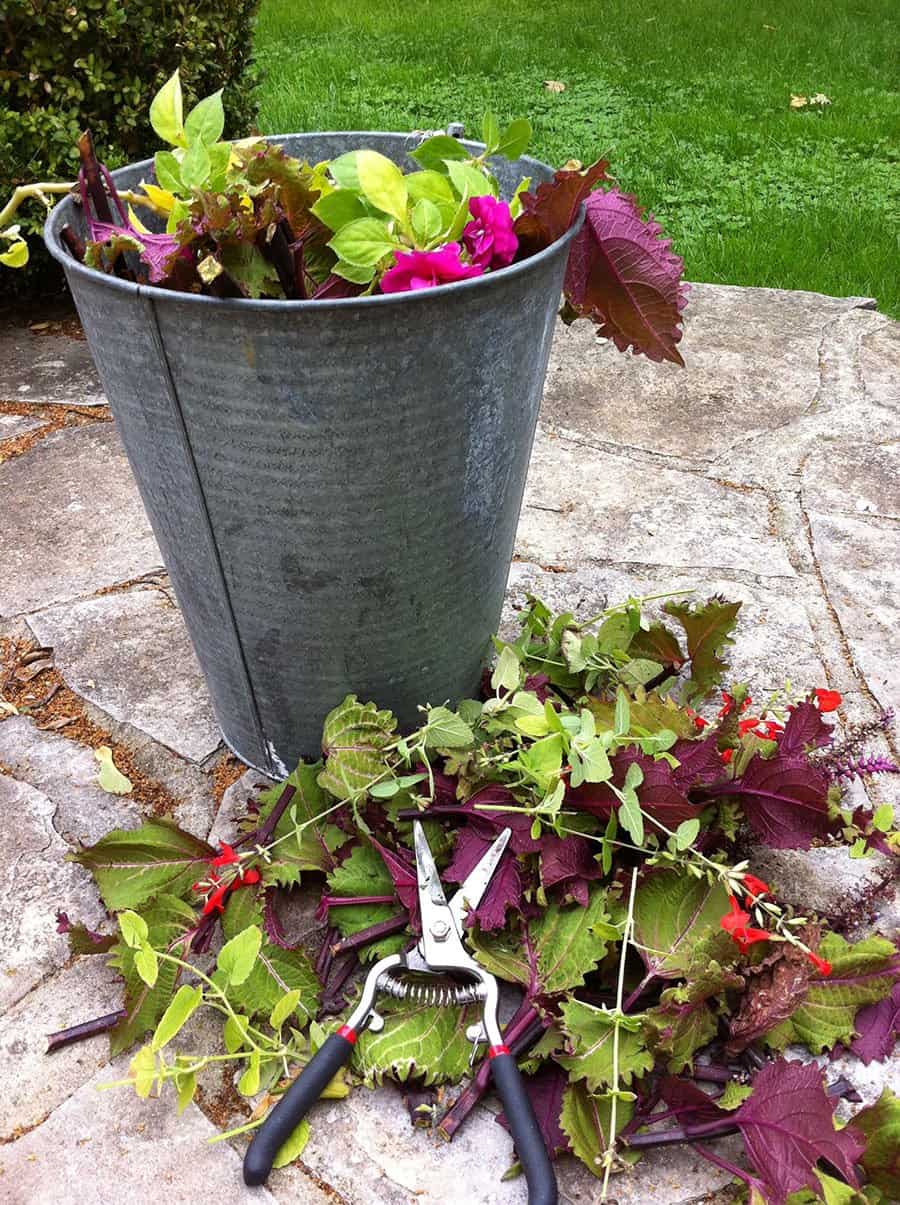
Now that we’re all cleaning up a summer’s worth of overgrown plants, there will be lots of organic material to deal with. Most of it is valuable for the garden, so don’t be too quick to stuff all those cuttings into disposal bags. The leaves, stems and roots of summer annuals are prime material for easy composting. I’ve never liked using compost bins; they became homes to wasps and rodents. But I do practice a rudimentary form of composting by burying debris or letting it compost down in low piles set in out-of-the way places.
I empty all the summer containers, taking out annuals and shaking the soil off their root balls. Slamming the root ball against the inside wall of a wheel barrow lets me collect the used soil mix, which I then dump around rose shrubs. If there’s enough, I distribute it over the garden beds. The annuals have been fertilized several times during the growing season, and their soil medium contains nutrients that can contribute to permanent plants in the ground, as well as add valuable organic material to the soil.
The second step is to reduce the size of roots, stems and leaves, using secateurs to quickly cut and collect them in another large container. The chopped-up annuals are added to planting holes when I’m moving perennials and shrubs around in autumn to provide organic material. The material also works well as mulch along the base of shrubs and hedges where it’s not noticeable. Snow and frost will break it down into organic material. Of course, you can take more time and cut the pieces smaller so they can be used in more visible locations.
When cutting back the stems of herbaceous perennials like rudbeckia, astilbe, foxglove and perennial geraniums, I use the secateurs and loppers for thicker stems, chopping the material into small pieces. The stems of perennial plants are tougher than summer annuals, taking longer to decompose, but cutting them into small pieces hastens the process. For thick and fibrous stems (or any that are actually woody), I make sure to cut and crush them thoroughly. Mixing a shovel of composted manure into the chopped plant parts injects active microorganisms into the material, and helps get the decomposition going. I find it works best to make flat, open piles (no more than 10 inches / 25 cm deep) that I leave exposed to the elements at the back of borders or anywhere snow and frost will get to them. By spring, the pieces are softened and ready to decompose in place, or they can be spread around plants and shrubs.
Using plant trimmings and seasonal debris for surface composting helps add organic material to the soil, contributing to healthy plant growth. This manner of composting is similar to allowing grass clippings to remain on the lawn, and it saves me the work of turning compost piles and struggling with a plastic compost bin.

I throw my trimmings in a small pile where I want a new garden bed and run a push lawn over them. They are finely chopped and Mother Nature does the rest.
Hi NYA,
Yes, any kind of lawn mower is the gardener’s best friend when dealing with leaves and trimmings. And it works best for me when they’re dry and crispy. All that organic material is a perfect start to a new bed!
— Judith